Menu
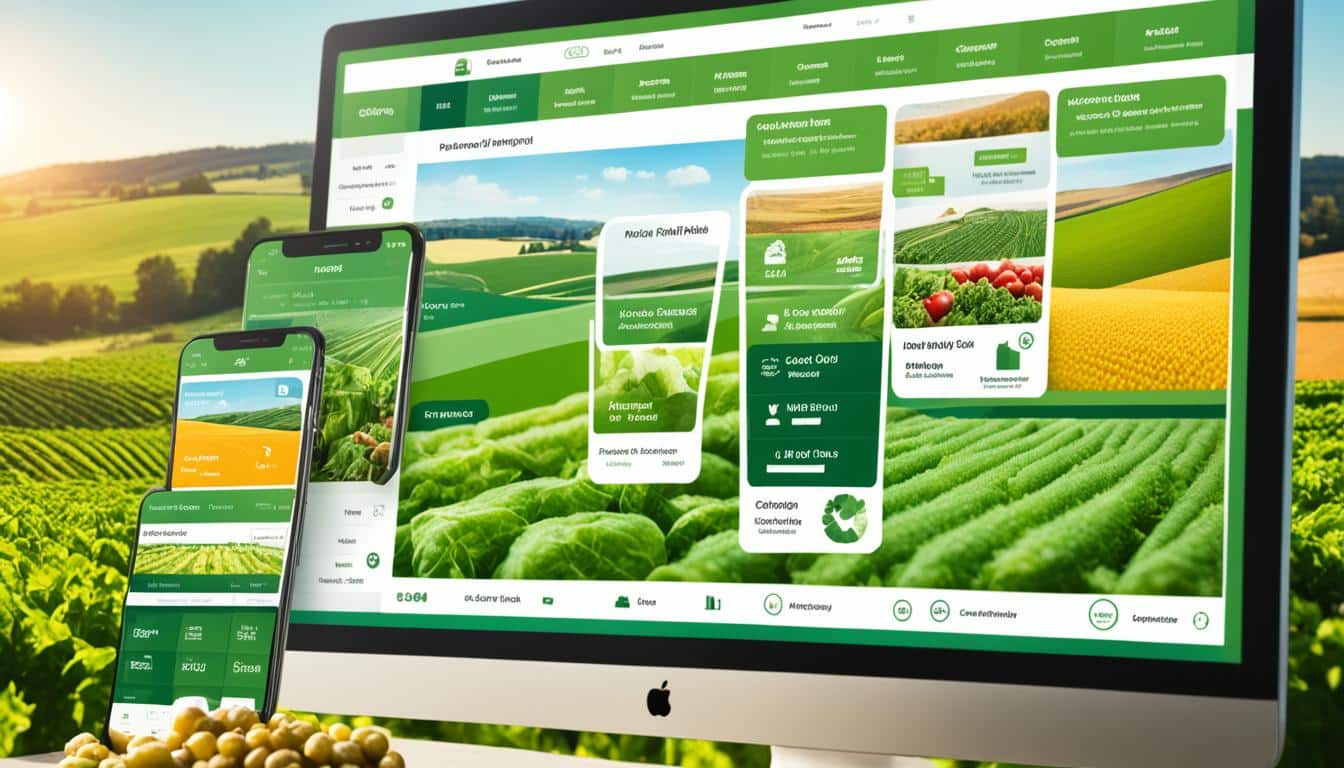
Farmers are diving into online shopping more, with myAGRAR at the forefront. It’s becoming clear that farming is shifting towards digitalisation, affecting farm e-commerce significantly. The use of marketing automation is making a big difference. It’s improving how visible farms are online, bringing in more leads, and increasing sales.
Everyone’s recognising that being on the internet is essential. This means having good SEO, PPC ads, informative content, and engaging with customers through emails. Each of these things is carefully planned to make sure people find what they need when searching online. In fact, nearly all online journeys start with a search.
Key players in the farm business, like ATR Landhandel and KWS SAAT, are changing how things work. ATR Landhandel, for instance, uses Adobe to sell its products online, changing how business is done. myAGRAR also uses Salesforce for keeping in touch with customers and running marketing campaigns better. This shows that digital changes in agriculture are very diverse.
The farming sector, known for its deep traditions, is changing fast because of *digitalisation*. In this new era, using marketing automation is a must. It helps farms work more efficiently, engage better with customers, and take their product marketing to new heights digitally. The use of technology in farming via marketing automation has several benefits. It simplifies the way farms interact with customers and boosts their marketing.
The concept of *marketing automation* began in 1992 with Unica. Since then, it has grown significantly, with big names like Eloqua, Silverpop, and Pardot joining between 2000 and 2005. After that period, companies like Hubspot and Marketo made marketing automation accessible to more businesses through SaaS. Now, giant companies such as Salesforce and Oracle offer advanced marketing tools as part of their Marketing Clouds.
*Marketing automation e-commerce* is great at handling and studying large data. This helps businesses learn more about what customers like and use that to improve their marketing. It’s essential for automating e-commerce marketing and making sure businesses keep their customers happy and invest their money wisely. For farms, this technology is key in turning website visitors into actual buyers by focusing on key areas in the sales process.
| Key Innovations | Impact on Agricultural E-commerce |
|---|---|
| Introduction of SaaS (2006-2008) | Increased accessibility of marketing automation tools |
| Acquisition by Major Players (Post-2000s) | Development of comprehensive marketing suites |
| Data Management and Analysis | Enhanced understanding of customer behaviour for targeted marketing |
| Optimisation of User Acquisition | Improved conversion rates through tailored strategies |
Email marketing, SMS, and ads that follow customers are important in e-commerce automation. By seeing where customers lose interest, businesses can decide where to focus their automation efforts. This leads to better results and ongoing improvement. Also, ads that follow users on Facebook, Google, and Twitter keep campaigns effective and far-reaching.
To make the most of marketing automation, it’s crucial to create plans for every step of a customer’s journey. Choosing the right tools and keeping customer lists up-to-date with their actions are vital. Regularly checking and improving these efforts based on reports helps companies stay strong in the e-commerce market.
Marketing automation is a game-changer for online shops. It makes them work better, connect more with customers, and sell more.

With marketing automation, online stores do their work faster. They use technology to handle routine jobs. This lets people focus on more important things. Almost half of businesses are already doing this. But, many aren’t using it to its full potential.
One big plus is how it helps businesses talk to their customers better. With special tools, they can learn about their customers. Then, they can make messages that really speak to them. This makes people more likely to keep coming back to the store. Plus, tracking what customers do helps make these messages even better.
All this effort pays off in better sales. Businesses that use marketing automation sell more. For example, making emails feel personal can more than double sales. By helping customers more along the way, from first look to final buy, stores see their sales grow.
The world of e-commerce is changing fast. Businesses are now using automation tools more than ever. In fact, almost half of all companies have recently started using these tools. This shows how popular they are becoming.
Automation tools are key for changing how businesses do things online. This is especially true for those in the agricultural sector. Customer Relationship Management (CRM) stands out. It’s vital for e-commerce in farming because it lets businesses divide customers into groups. This means the right message gets to the right person at the right time.
Another important use of automation in e-commerce is in email marketing. Sending emails at the best times with the most fitting content can boost customer interest and sales. For example, some brands have seen a big jump in first-time purchases (104%) by using automated emails.
Analytics tools are also crucial. They show businesses what customers are doing and thinking. This helps in making marketing strategies better and improving the customer’s shopping experience. Many companies from all over the world (60%) use data to make changes, showing a big trend towards doing so.
Automation isn’t just for emails. It can also help with social media presence and getting people back to your site. For example, setting up automated ads that target people who visited but didn’t buy can cut costs while raising sales.
Making shopping experiences more personal can boost sales by 5-11%. This personal touch is a big part of successful e-commerce today. It shows why having tools that can react to what customers do is so important.
To sum up, using automation tools for e-commerce is more of a must than a nice extra today. They can help businesses in many ways, from understanding customers better to growing sales. In the agricultural e-commerce world, they’ve become essential.
In the changing world of farm e-commerce, using automation tech is key. System compatibility and data blending are crucial for success. They boost efficiency and help grow by using data well in e-commerce plans.
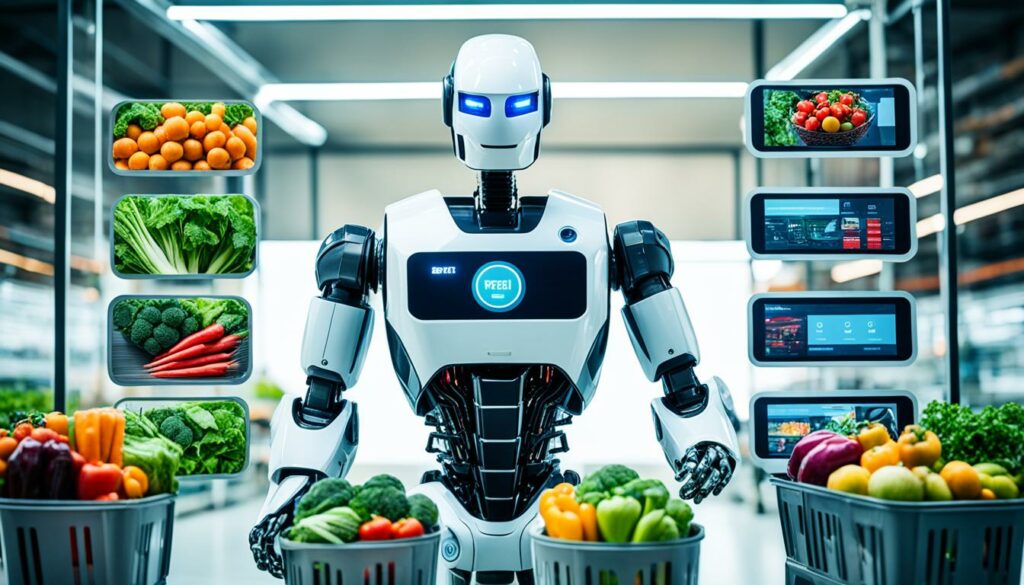
First, make sure your automation tools work with what you have. This means linking tools like CRM and inventory management with platforms such as Shopify and BigCommerce. For example:
| Platform | Tool | Compatibility Benefits |
|---|---|---|
| Shopify | Shopify Flow | Helps manage new products and alerts on low stocks, improving customer satisfaction. |
| BigCommerce | Automated Email Marketing | Boosts sales with personal messaging and timely updates on back-in-stock items. |
Getting systems to work well together cuts down on errors. It boosts productivity, especially important in farm equipment sales. It makes sure everything runs smoothly for better results.
Linking data is key for smart automation. It pulls info from stock, customer lists, and sales. With a full view, businesses can plan better.
The UN says we need to up farming by 70% by 2050 to meet food demand.
We must use data smartly to make farming more efficient.
Data blending offers big benefits:
Also, connecting automation with business data helps keep inventory in check. This technique ensures a ready stock ahead of customers’ needs.
In the UK’s farming sector, there may be a 75% drop in workers. Automation is now more important than ever. By focusing on making tech and data work together, farm e-commerce can be smoother. It lightens the load on workers and helps businesses grow.
Using the best practices for e-commerce automation makes everything smoother. It makes customers happier and sales better. To make automation work, companies should look at three main things: segmentation, personalisation, and checking results with monitoring and analytics.
Splitting customers into groups helps customise marketing. This means looking at who buys what and how they shop online. For example, websites like Amazon, Kitmodo, and IronPlanet use this well. They show that focusing your message can make customers feel more important, which keeps them coming back.
Creating customer groups also helps with loyalty programs. These can give special deals to different people, making them want to buy more from you.
Making shopping personal is key to winning and keeping customers. By connecting CRM with online shops, businesses can speak directly to customers. This might mean sending emails when something they might like comes in, or suggesting items based on what they’ve looked at before. Testing what works best (A/B testing) helps make your messages hit the spot every time.
Watching and learning from customer habits is crucial in online retail. Tools can tell companies what’s working and what’s not in real time. They can see how ads, emails, and more are doing. This helps improve how they reach and please customers. Using these tools also means smoother data, helping companies see the bigger picture of their customers’ journeys and their own efficiency.
Following these steps in e-commerce automation leads to a stronger market position. It also allows companies to give their customers what they really want. By smart segmentation, personal touches, and careful watching, agricultural online businesses can make the most of automation. This approach powers their growth and keeps customers satisfied.
Using marketing automation in e-commerce can be hard. There are many issues to tackle. A big one is making different software work together. This can lead to wasted time and money. Using platforms that can talk to each other can help a lot.
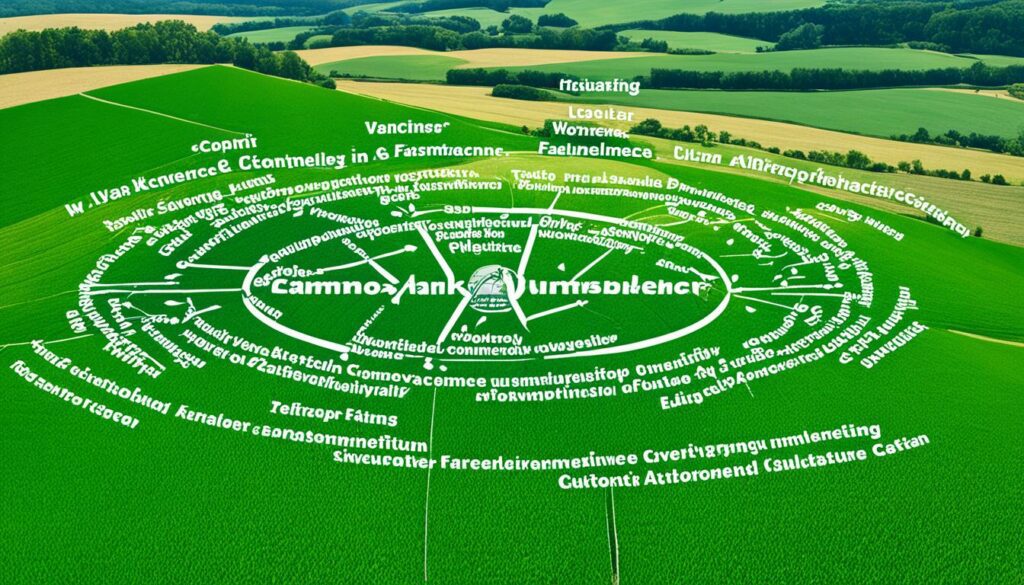
Managing lots of data is also tough. E-commerce stores gather a lot of information about customers. To handle this well, they need good tools and trained staff. Creating clear rules for handling data is important too.
Many businesses struggle to use marketing automation fully. They miss out on a lot of its benefits. Seeing all the ways automation can help, like in emails or customer service, is key. It can make work faster and customers happier.
Personalisation is crucial in solving e-commerce issues. It means offering customers things they will really like. This could be through targeted ads or emails. Using customer data for this is very effective.
One way to get over these issues is to focus on data. Many companies use data to improve. In e-commerce, this can mean creating customer groups for better marketing. This makes messages more relevant to customers.
Dealing with e-commerce automation needs good tech and planning. By making smart moves and always looking to get better, companies can do amazing things with automation. This can boost sales and make their online store stand out.
| Challenge | Solution |
|---|---|
| Integration of disparate software systems | Adopt interoperable platforms |
| Management of vast swaths of data | Implement robust data management technologies |
| Underutilisation of automation potential | Full utilisation of functionalities and continuous training |
| Lack of personalisation | Leverage customer data for personalised marketing |
MyAGRAR’s use of marketing automation has brought significant change to online farming sales. By carefully planning and combining different tools, they saw great success. This proves that marketing automation is indeed very effective in farming e-commerce.
RENO, Walter de Gruyter, and GRANIT PARTS trust dotSource for their marketing needs. In the case of MyAGRAR, tools like Salesforce Marketing Cloud and Pardot were key. Salesforce Marketing Cloud lets you reach customers personally, no matter the channel. Pardot helps with finding and deciding on new leads, making personalised emails.
MyAGRAR connected Salesforce Pardot with their Sales Cloud seamlessly. This made it easy to tailor marketing strategies and look after the various tasks. They could quickly make custom content for emails, ads, or social media using Salesforce. This allowed them to interact with customers in many ways.
Natascha Barrett from De Gruyter and Benjamin Luyten from GRANIT PARTS praised Salesforce Marketing Cloud’s impact.
MyAGRAR’s approach to marketing automation brought about big changes. They got to know their customers better, which led to smarter ways to market. This, in turn, boosted their sales. Managing customer interactions became smoother thanks to CRM. Integrating data better also made their work more efficient.
Agricultural e-commerce businesses that link up their automation tools well see the best results. They can manage customers better and make decisions based on data. By using cloud services, these platforms are ready for whatever comes next.
Using the right marketing automation in e-commerce can make leaf e-commerce ventures more efficient. This tricks help businesses talk to their customers better. They can personalise more and work smoother, which means more interest and more buying.
Content marketing is crucial for e-commerce growth. For farm e-commerce, it’s key. Sharing educational content makes farm businesses look like experts online. This matters a lot because many buyers start looking online. Blogs, how-to videos, and infographics help people. They build trust, which turns visitors into regular buyers.
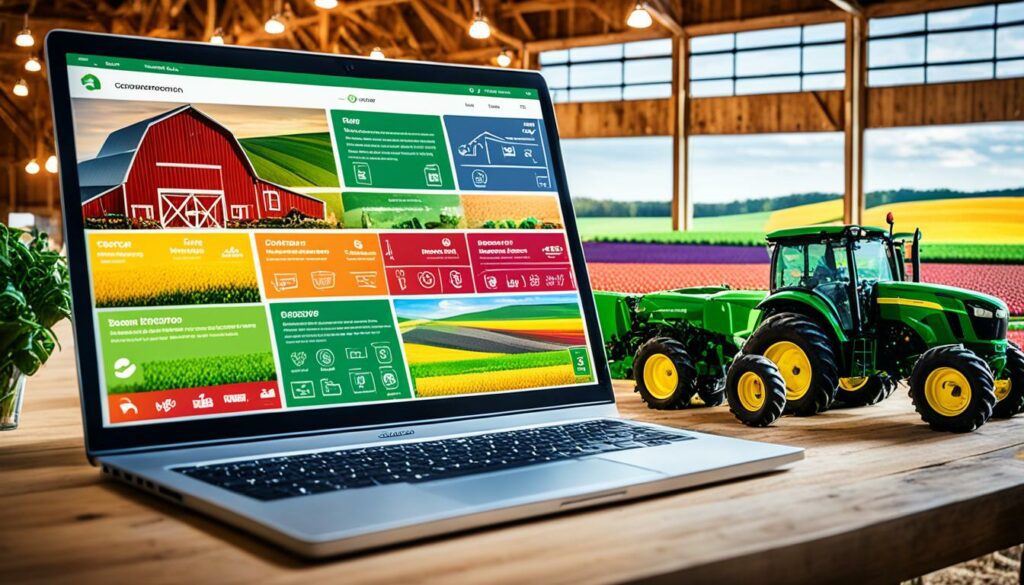
Email marketing is still a big deal for connecting with people online. Automating emails is super powerful. It can make a big difference in how many sales you make. For example, tweaking the email title and what you ask people to do can increase sales a lot.Forecast are saying 50% more people are buying online.
Being active on social media is essential, especially for farm e-commerce. With automated tools, you can keep posting and talking to people. You can track how well these posts do. This helps you have a smart social media plan that matches what your audience likes. This keeps your farm e-commerce looking strong online.
All these e-commerce automation tips can really help farm businesses grow. They let businesses reach people better in many ways. And this leads to more sales and stronger connections with customers online.
In the world of farming, CRM tools are making a big difference. They help farms manage and improve their work. CRM makes it easy to keep track of customer details and use them to improve the way you work with them.
Thanks to CRM, agricultural businesses can offer better services. CRM tools let farms do many tasks more efficiently. For example, they help with making purchases, managing deliveries, working from afar, and keeping data safe. Tools like Agrivi, FarmLogics, and Microsoft Dynamics CRM for Livestock are made just for farming needs.
| CRM Feature | Benefit |
|---|---|
| Workflow Simplification | CRM systems provide tools for equipment management, livestock tracking, inventory management, task planning, financial control, and staff efficiency monitoring. |
| Automation Benefits | Automation in agriculture leads to increased efficiency, reduction in human errors, and improved cost-effectiveness. |
| Custom CRM Development | CRM solutions can be customized for specific activities like crop production, livestock breeding, and fishery management. |
Charlie O’Brien and other experts say that using CRM well is key. It’s not just about having the software. Farming businesses need to fix their work processes too. Titan Machinery improved their sales by using CRM across all their stores. They made sure their team followed up on leads quickly and kept their CRM data up to date.
Pairing CRM with marketing automation helps too. It sends customers personalised messages when they’re ready to buy. Farming businesses can try out CRM first to see what works best before using it fully. In the end, CRM helps farms run smoother, making their work more efficient.
Marketing automation is key in boosting sales online. It uses smart messaging and strategies to turn potential buyers into fans.

Guiding possible buyers down the sales path is essential. This is done through personal chats and well-timed messages. For instance, sending out content based on what customers like and are interested in.
Keeping customers happy in farm e-commerce is just as important as getting new ones. Automation tools are great for this. They let businesses offer special deals and programs to keep current customers happy and coming back. For instance, reminding them of past buys.
Using tools for both getting new leads and keeping customers makes a business strong. Marketing tools help companies keep getting better with data insights. This means more sales and working smarter.
| Metric | Value |
|---|---|
| Google Searches Processed Daily | 40,000+ |
| User Clicks on Organic Search Results | 70% |
| Effectiveness of Social Media Ads | 74% |
| Preference for Page 1 of Search Results | 75% |
| Ad Clickers More Likely to Purchase than Organic Visitors | 50% |
| Convinced to Purchase After Watching a Brand’s Video | 88% |
| Increased Shares from Social Video Content | 1,200% |
Artificial Intelligence in e-commerce is changing the game for businesses online. It helps businesses predict what their customers will want with great accuracy. This is key in a world where keeping customers happy is everything.
AI-driven marketing automation shines in suggesting products. It spots what each customer might like and suggests items based on their tastes. This personal touch makes shopping more enjoyable and boosts sales.
AI also cuts down on regular work, making things cheaper and faster. AI assistants like Siri and Alexa help customers quickly, sorting out easy questions. This leaves human staff free to handle tougher problems, improving service all round.
Generative AI plays a part in making catchy, search-friendly content. It writes up product blurbs and other texts, saving humans time. AI enhances ad selection too, making sure adverts reach the right people, which steps up profits.
However, AI’s role isn’t just about simplifying tasks; it offers big-picture benefits. For example, it helps set prices in ways that boost selling and earning. It also forecasts what will be a hit with customers, helping businesses stay ahead.
More and more companies are using AI for smarter content creation and other tasks. Nearly half already do, and most expect AI to change how they work soon. It shows how AI is not just helpful but critical in staying ahead and winning customers.
Leveraging AI means making choices based on hard data in sales and marketing. With AI, businesses can figure out what works best and connect with customers on a personal level. For e-commerce to do well in the digital era, AI is not optional; it’s a must.
Finding the perfect e-commerce automation software is crucial for success today. It’s essential to look for features that support your marketing and business goals. Make sure the platform helps your team work smoothly without much hassle.
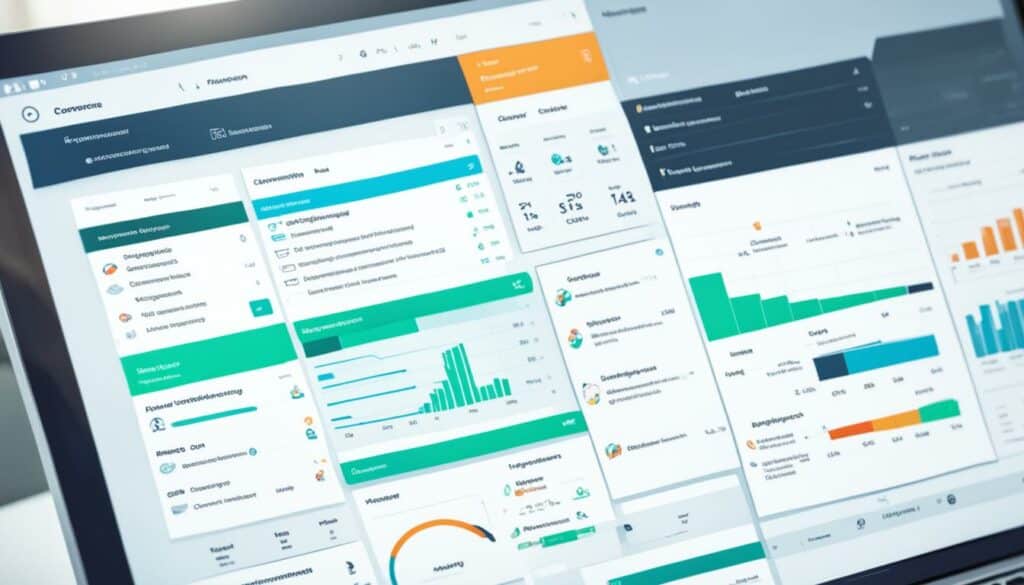
When choosing automation software, keep an eye out for certain must-haves. Think about how easy it is to use and if it fits nicely with other tools you use. Having good analytics is also key. It allows you to make smart choices based on data.
Growing your e-commerce business is all about scaling up. The scalable marketing solutions your automation software offers should make it easy to handle more data and complex strategies. It should work well with popular e-commerce platforms too, smoothly adapting to your needs as you grow.
| Feature | Importance | Example |
|---|---|---|
| Usability | High | Intuitive Interface |
| Integration Capabilities | High | API Access |
| Advanced Analytics | Critical | Actionable Insights |
| Scalability | Essential | Seamless Adaption |
Klaviyo has shown what the right automation software can do. They helped a business increase their email list by 640% in three years. The secret? Personalisation and easy data sharing. The right software boosts your team’s productivity and helps you make more money.
Starting a marketing automation campaign takes careful planning. First, you set clear goals and figure out who you want to reach. This ensures your marketing plan helps meet your business’s big objectives. Now, half of all organisations have started using marketing automation, showing it’s a popular choice.
Then, pick the right ways to connect with your audience. You might use emails, social media, or ads that target specific people. For example, emails that are sent automatically get opened more often, which can boost your sales. ActiveCampaign is a tool that can help send messages tailored to each customer, improving how well they engage with your business.
Creating interesting and helpful content is key. This content should grab attention and build interest in what you offer. For online shops, personalised messages can make people almost 80% more likely to buy. Using customer data to improve your messages helps you build stronger relationships with them.
After creating your content, it’s time to automate when it’s sent. This lets you react quickly to what your customers do. For example, messages about abandoned products are opened a lot. These quick messages can help move customers closer to making a purchase.
It’s important to test how well your campaign’s doing. This means looking at data and feedback to see what works and what needs to change. A quarter of marketers feel that automation tools are hard to master. And, just a fifth of companies use these tools to their full potential. This means there’s a lot of room for growth by learning and adjusting your strategy.
Finally, keep working to make your campaign better. By constantly testing, learning, and making changes, you can improve the results of your marketing efforts. This approach can lead to better returns on your investment and steady business growth.
| Step | Description | Outcome |
|---|---|---|
| Define Objectives | Determine clear goals and target audiences | Aligned campaign with business goals |
| Select Channels | Choose appropriate channels for engagement | Higher reach and engagement |
| Craft Content | Create relevant, valuable, and engaging content | Enhanced lead nurturing and conversion |
| Schedule Actions | Automate marketing actions and triggers | Effective customer journey control |
| Test and Refine | Evaluate and improve campaign elements | Optimal performance and ROI |
Measuring ROI in marketing automation is key for understanding your e-commerce success. By looking at important marketing measurements, businesses can use their resources better. This leads to bigger profits.
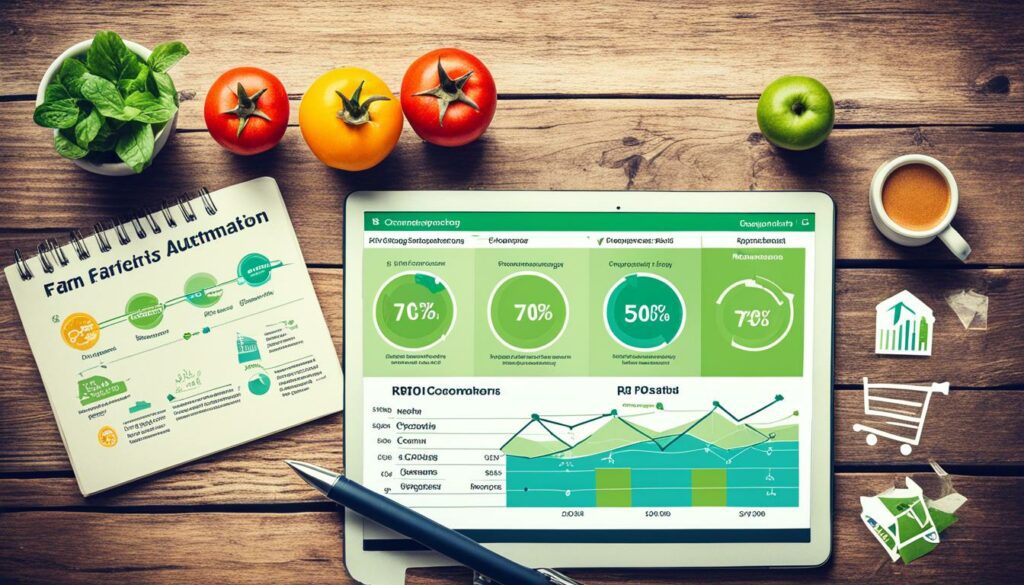
Tracking various metrics is crucial to understand marketing automation’s ROI. You should follow lead conversion rates, customer acquisition costs, and customer lifetime value. This analysis helps you see your e-commerce performance clearly and find ways to do better.
Looking into e-commerce performance is crucial for seeing your marketing automation’s impact. This means studying data to understand how automation affects sales, customer interactions, and efficiency.
| Category | Impact of Marketing Automation | Example Metrics |
|---|---|---|
| New Leads/Sales | Increased lead generation and sales | Lead Conversion Rates |
| Time Savings | Freed up time for other projects | Hours Saved per Week |
| Cost Savings | Reduction in additional headcount | Customer Acquisition Costs |
| Peace of Mind | Ensuring efficiency and focus on high-value activities | Customer Lifetime Value |
Understanding these marketing metrics and doing in-depth e-commerce performance analysis can greatly improve marketing automation ROI. It’s crucial for success in the competitive e-commerce world to know and use the benefits of automation.
The future of e-commerce automation looks bright. We will see more AI and increased personalisation. This change means that by 2024, 8 in 10 companies will use these automation tools. They help manage complex marketing and offer more personalised experiences.
AI is becoming a must-have in marketing automation. Tools like predictive and generative AI are changing how businesses plan. They help make smarter choices, leading to better-targeted marketing. On Cyber Monday, ActiveCampaign managed 1.4 billion automation actions. This was 20% more than the year before. Looking forward, AI will keep making e-commerce smarter and quicker.
Fully personalised e-commerce is on the horizon, thanks to AI. Today, consumers want brands to know and reflect their tastes. For 61% of shoppers, this is key. To meet this demand, companies are using advanced marketing tools. These tools make it possible to offer personal content to many. By focusing on up-to-date data and custom onboarding, businesses have seen a 6% jump in trial conversions.
The future of e-commerce automation is exciting. It will not only catch up with tech but also use AI and personalisation smartly. These changes will improve customer interaction and boost sales. As the sector evolves, staying ahead with innovation will be crucial. This will help companies stay relevant and grow.
Marketers use digital tools to make marketing tasks run smoothly. This boosts how well ads work and lures in more buyers. For farms, this means handling emails, posting on socials, and looking after customer vibes without manual help.
Switching to marketing automation saves time on boring jobs and woos shoppers with personal touches. It’s like a smart friend that knows just what you need to hear. This can lift sales by showing off the right stuff at the right time.
For online shops, you need systems that keep customers close, send the best emails, and dig up smart tips from the numbers game. Being friends with data is key to spotting what makes folk tick and what makes sales zing.
Ensuring your tools work well together means picking ones that speak the same tech language. They should high-five with your current set-up for a seamless dance. This way, you can keep the marketing magic flowing without tech hiccups.
Top-notch shops know that talking directly to each customer, not as a crowd, is the golden rule. By grouping shoppers and checking the numbers closely, you can fine-tune your ads for each set. This boost is often the secret behind top sales.
Clicking together different software, taming big data beasts, and keeping the team singing the same tune can be a mountain to climb. The secret sauce is using tools that love each other, training up your crew, and having a solid game plan for dealing with data.
Looking at MyAGRAR shows how being smart with customer data and aiming laser-focused ads can boost sales. With the right tech mix, this can lead to deep insights into what customers want, making your farm biz a winner.
Good tactics include showing off your know-how through content and keeping the talk going via emails. Staying active on social media also keeps you on shopper’s minds. This trio can help tell the world what you’re about.
Think of CRM tools as the glue that makes your customer relations stick. They help keep track of who’s who, sniff out what they might need, and pave the road with personal touches. They basically help make shopping with you a pleasant experience.
By guiding potential buyers step by step with messages just for them, sales can jump. Plus, keeping in touch with folks who already bought something can keep them coming back. It’s all backed by clever number-crunching to fine-tune your sales recipe.
AI isn’t just a chatterbot; it’s the wiz kid who learns what makes a shopper’s heart skip a beat. With AI’s help, you can be where the action is with ads that feel tailor-made. It’s like having a personal shopper for each customer, showing the right stuff every time.
Make sure your software is easy to love, plays well with others, and grows with your dreams. It should be smart enough to know what the numbers mean but simple enough for anyone to work some magic with it.
Start by knowing what you want, who you’re after, and how you’ll catch their eye. Set the scene with amazing content, pick the right time to send your messages, and keep an eye on how it’s all going to make it even better next time.
Keep an eye on how many leads turn into sales, what it costs to get a new customer, and how long they stick around. By peeking at these numbers often, you can tell if your marketing magic is hitting the spot and fix what’s not working.
We can look forward to smarter ads that feel like they were made just for you. Thanks to the nerdy know-how of AI and friends, shopping online will get as personal and spot-on as talking to your favourite storekeeper.